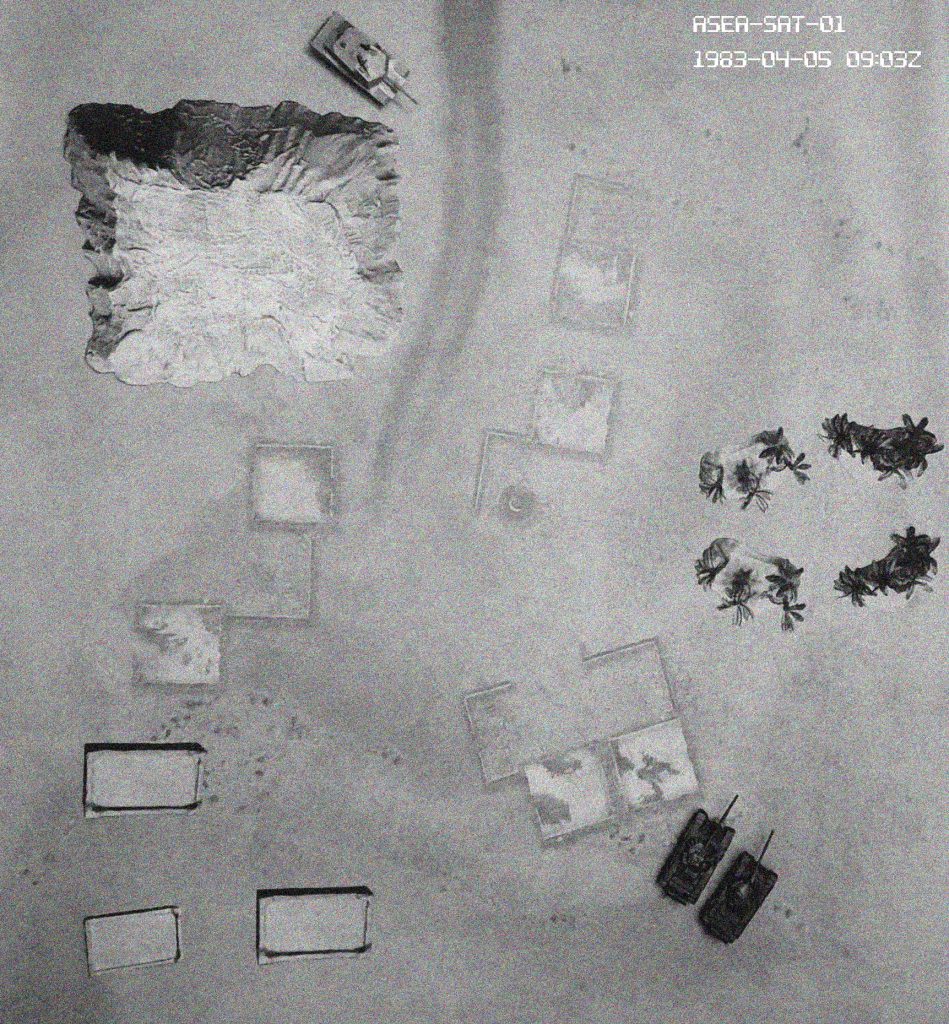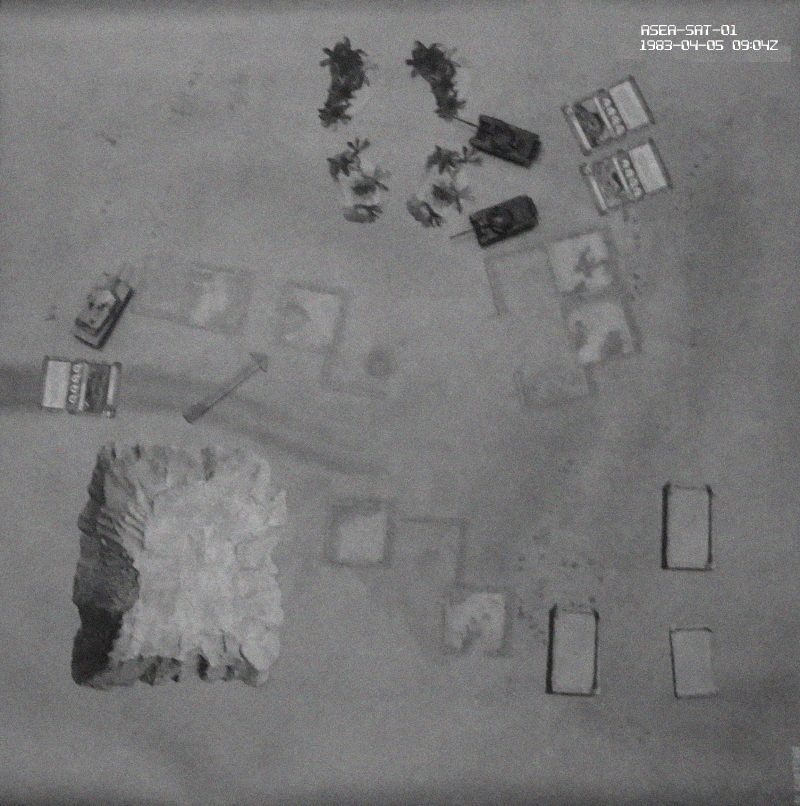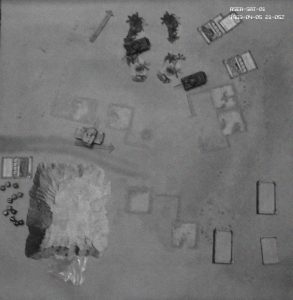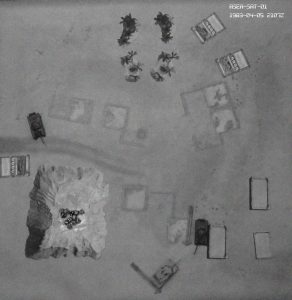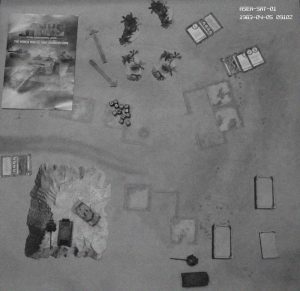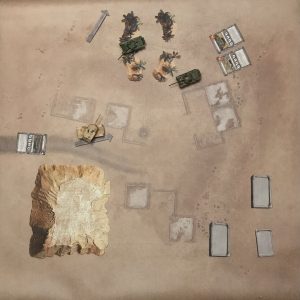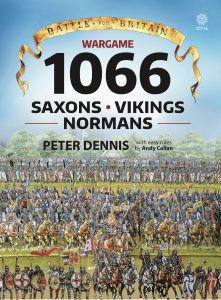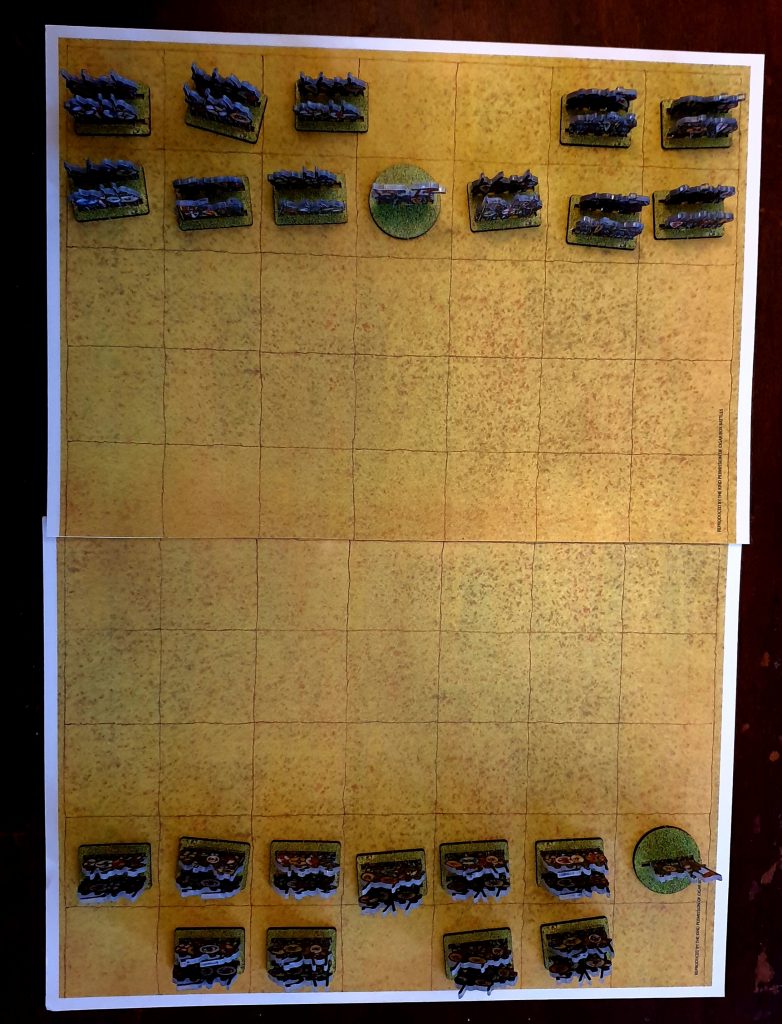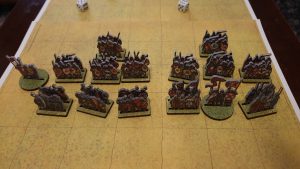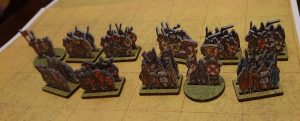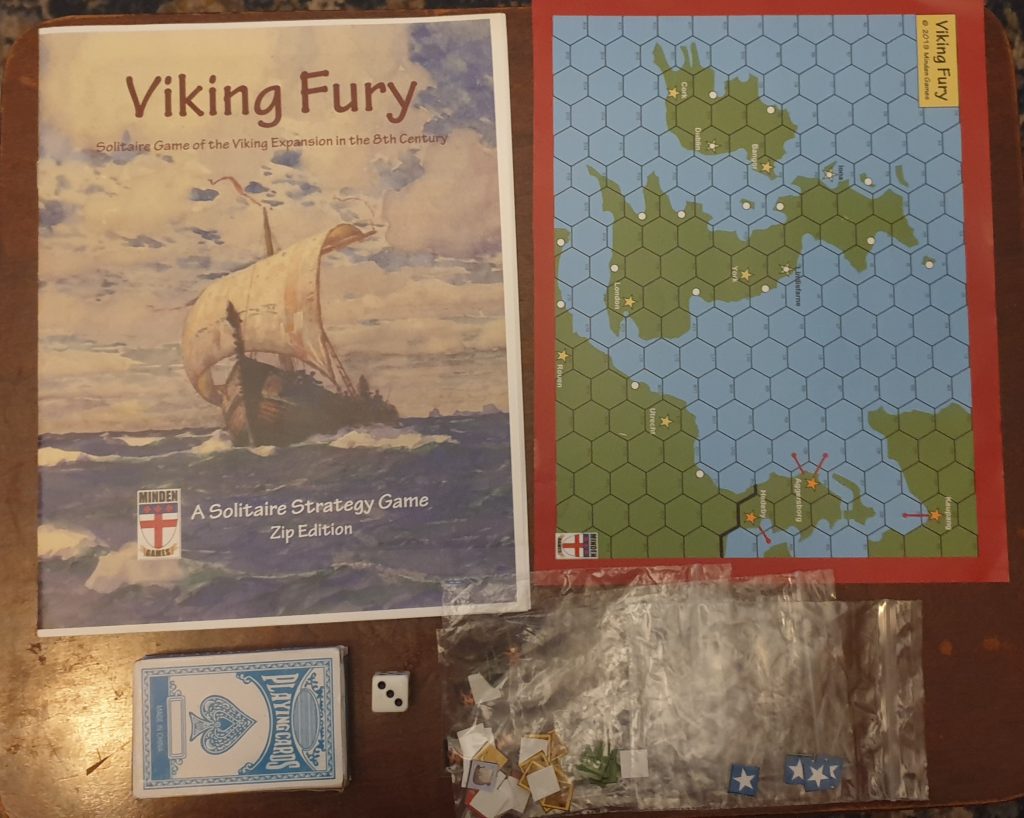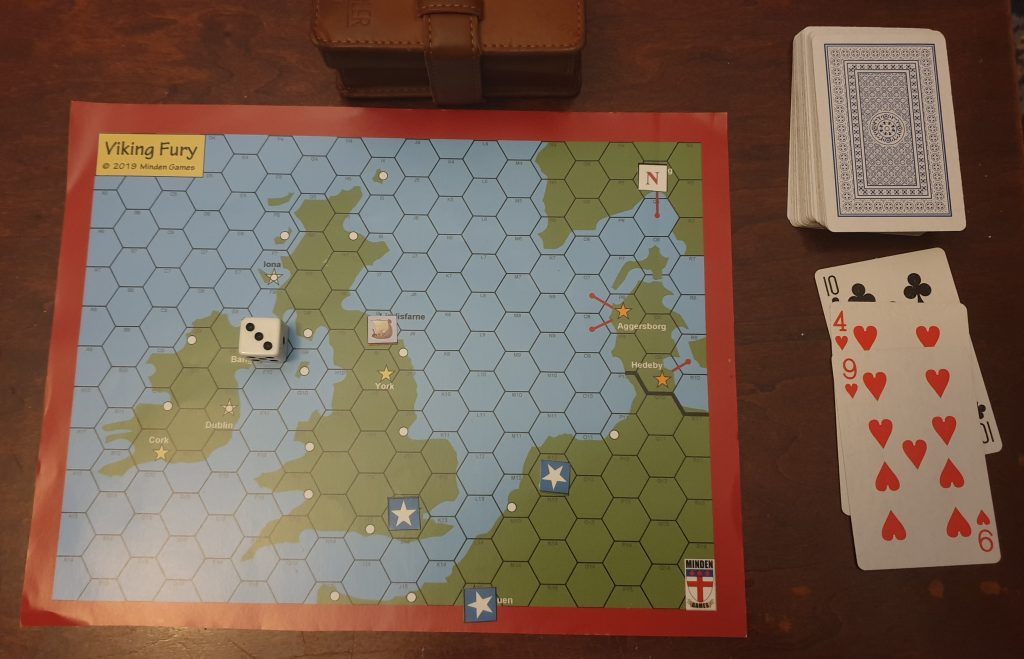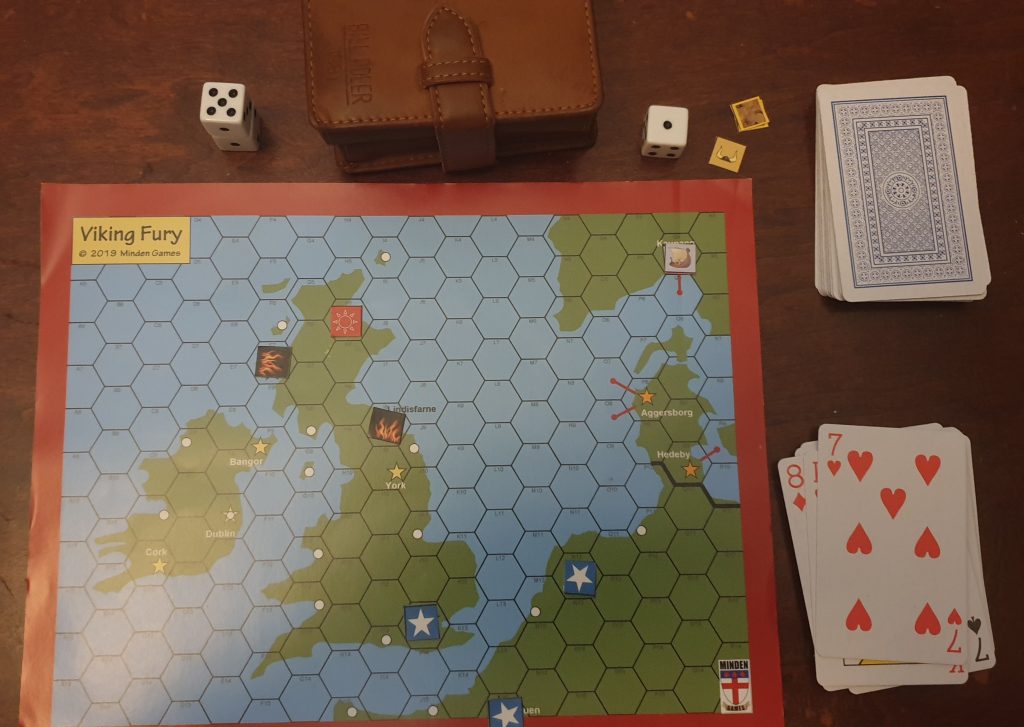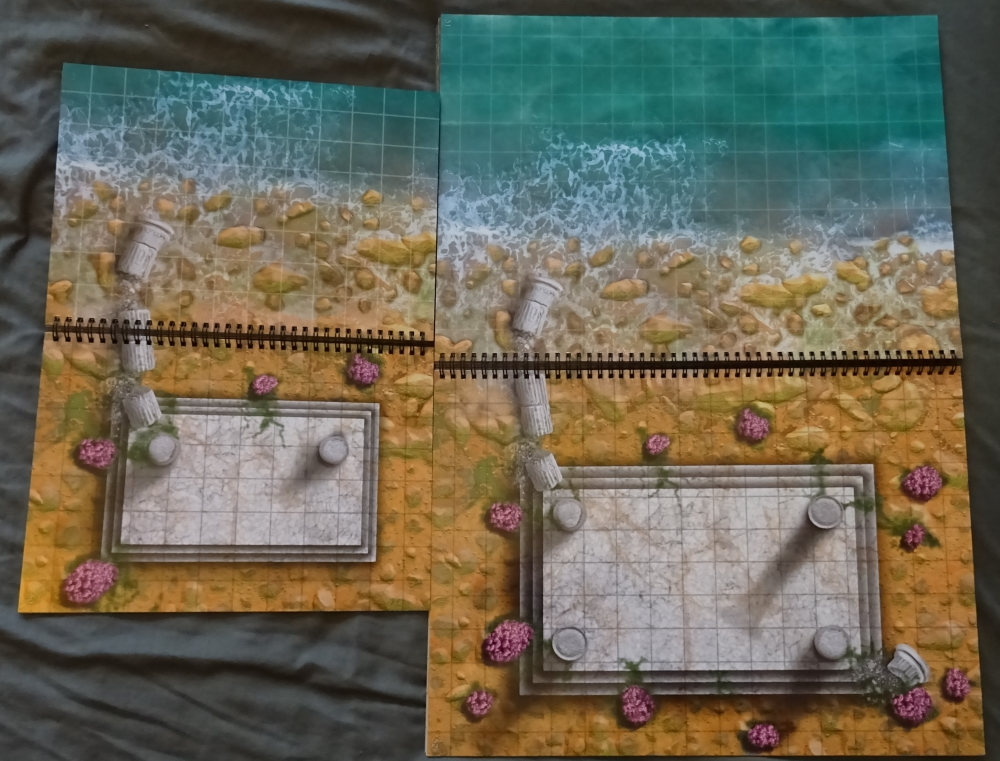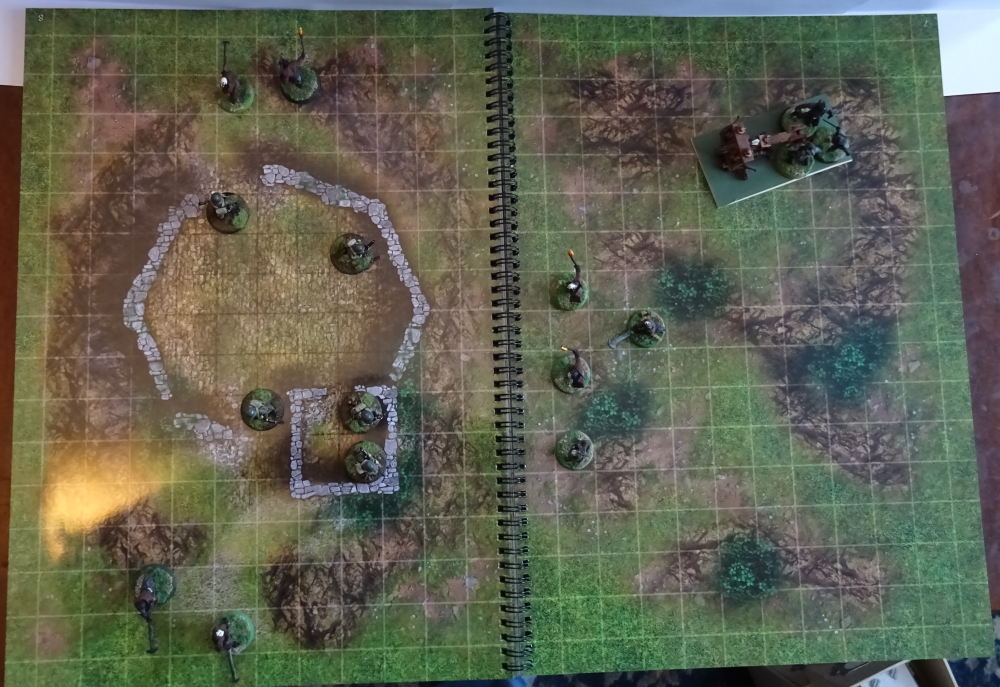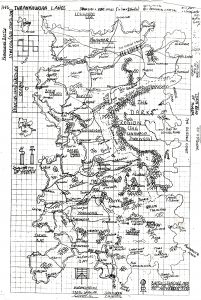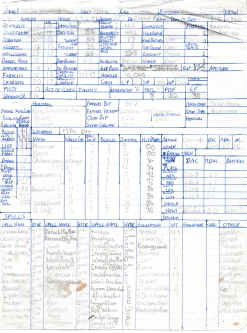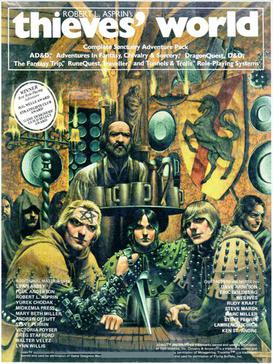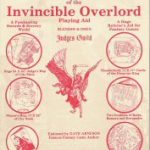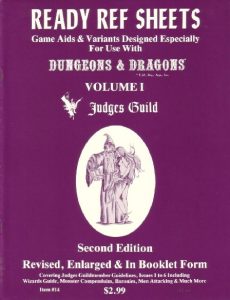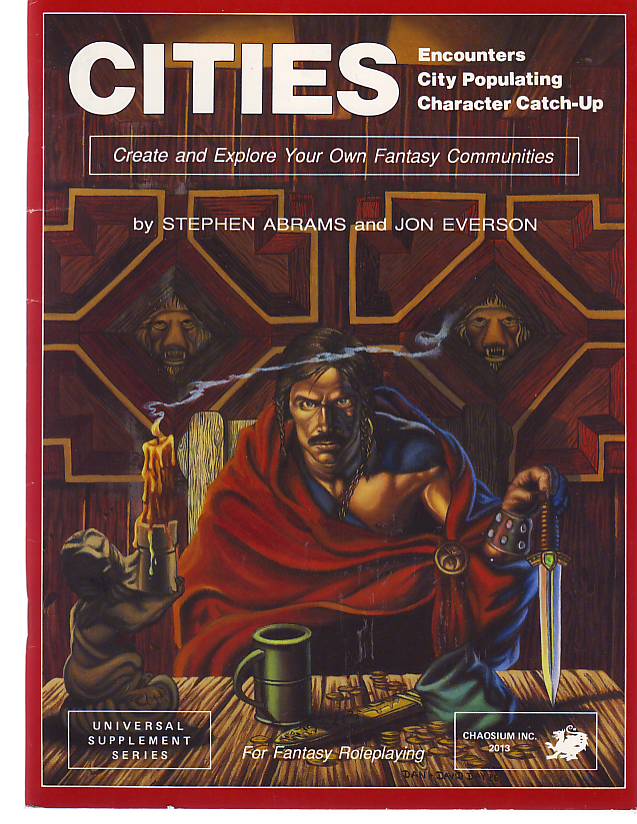Bear with me!
Our Heroes
– Farshad – A merchant adventurer, small of stature, blamed for more than he should be
– Dhran the White – A farmboy seeking his way in the world, owning his name to a brush with fear
– Juan José – A mercenary and healer from the barbourous West
– Jushuur – A mercenary and ranger, deadly in combat, a half-immortal Perim
– Utana – A noble and agent of the Haraxan magistrate Niralha
– Jalabu – A merchant guard with questionable skills from the far south, who thinks Farshad could be blamed for more
– Gunion – scholar and practitioner of mystic arts, currently studying secret tablets in an unknown location, a half-immortal Perim
First again to reiterate, I am running the White Dwarf scenario “Irilian” by Daniel Collerton, but I am adapting it to my style and reducing the almost constant combat, at least in the approach to the city. I have also adapted details to my campaign world. This means that some things don’t occur, or occur in the wrong order compared to the original scenario.
The battle over, and having looted many spare arrows, the group try to see if there is any more useful information that they can garner from their rescuer. When that is exhausted, they finish striking camp and the wagon caravan proceeds on. Jushuur and Utana, acting as scouts, spot a tree fallen across the path almost, but not quite out of sight along the path. Jushuur, Farshaad, Juan José and Utana, it being Dhran and Jalabu’s turn to lend their mules to haul carts, ride round through the woods to try and take potential ambushers in the rear. Utana and José pick their way through the woods expertly, while Farshad gets left a little behind, less skilled at this, but he escapes lightly compared to Jushuur’s, whose horse stumbles and throws him. His armour protects him for serious damage, but he is still winded.
Thankfully there was no ambush. Jushuur does his “Aragorn the Detective act“. As he reconstructed events, this felled tree was cut down to cut off an avenue of escape, should they flee this morning’s attack, this tree would slow down people fleeing. Hitching up their mules to the free, they drag it clear and the caravan continues on its way.
The rest of the day is thankfully free of incident, and they are able to make it to the trading post by dusk. To all it is recognisable as an ancient Haxamanis fort, more familiar to them from their homeland as built using mud bricks, here the design is recreated in stone and wood, patched and repaired over the years. Its tower, overlooking the gate, is more wood than stone these days, but it still stands sentinel over the gate, covered in hides to give some protection against fire. The inside of the wall is divided into corrals on the south side, makeshift shops and quarters on the west and north, some empty ground on the east and, near the tower, tables and a kitchen.
The caravan wound their way in and sought someone to point them to the people in charge. A casual labourer took them over to the owners at the bar, and pointedly hinted at a drink as a reward, nudging an empty cup as a hint. Just as pointedly, the group, initially, ignore their benefactor. Eventually drinks were bought, including for casual hangers on and the group explained to the owners the troubles that they had encountered and the risks of attack that seem to be rife in the area.
Horrified, the owners told the group that, if it was earlier, they would have refused the caravan entry. As it was, they must be gone at first light. The party are given a warning, the bridge over the River Iral had been broken, and the caravan would have to cross via the southern route, using ferry, assuming the ferry was still there.The group suggested extra guards might be of value, and watched with some trepidation as a group of rather disreputable muleteers volunteered, hardy, ragged, whetting their long knives and speaking in double entendres and veiled threats, they turned out to be conscientious watchers, and the fear of the group that they would be murdered in their beds proved groundless.
The caravan left, and some Kotharim travellers were given messages to take home, and details of where the bodies of the fallen were to arrange for reburial. As they left the trading post, the land started opening up, the forest thinning out and giving way to plains. The road turned to the south before heading east again, leading to some buildings and the ferry, a large raft pulled by ropes. Haggling was short, the caravan had not much of a choice, and the ferrywoman. a strong and sturdy young woman called Salaxhwana, introduced her pet brown bear Dahlvha. The group decided to have Utana, Jushuur, Farshad and José cross together with Salaxwhana on the first ferry to established a beachhead and to help pull ropes at that side., Dhran and Jalabu kept watch with the Kotharim and prepared the next load to cross.
As the group hauled on the ropes, they didn’t notice the eight, weirdly serpentine, beings that surfaced from the river, and hauled themselves onto the ferry, armed with tulwars and bucklers, while two others emerged further along the hawsers, sawing away with knives.
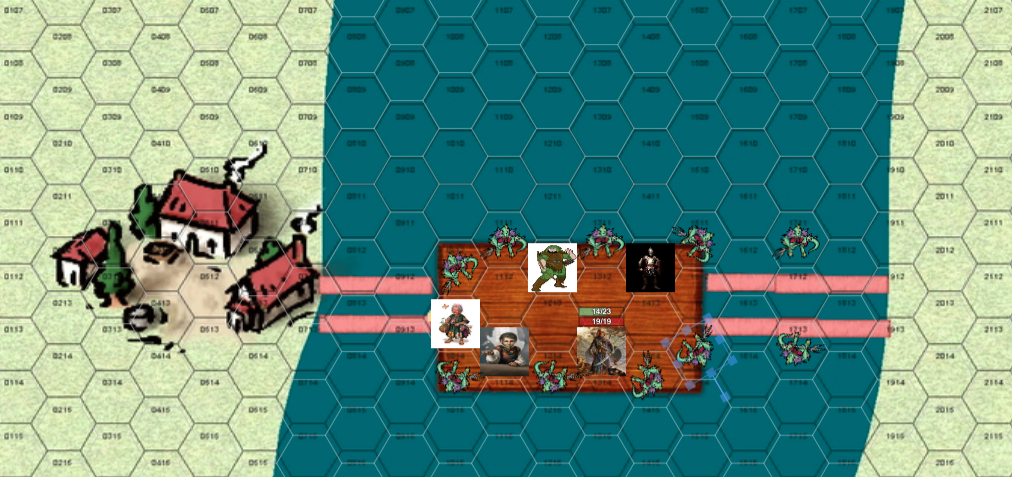
Caught unawares, outnumbered nearly two for one and too close for the archery they had prepared for, In the intial attacks, all was as the group could do was endure the attacks of tulwars in the hands of immensly strong serpent-men while they drew their melee weapons, however the following attacks were different, tails whipped out, knocking Farshad, José and Utana into the river. Utana, weighed down by heavy armour, was lucky, he caught on the hawsers of the ferry and was able to hold himself up. but it took him a long time to get back onto the ferry. Farshad and José were able to clamber back on much sooner.
Jushuur, more agile than he looks, avoided getting immersed in the river, hust as well with his heavy armour.Those on the shore did what they could to help by firing arrow and throwing rocks to attack the Keteaorum, one of whom, by clumsiness, managed to throw itself into the river, which was nice. The Keteaorum were winning, threatening Salaxwhana, which drove Dahlvha the bear into the fight. She swam across, ripping through the Ketaorum with her claws.
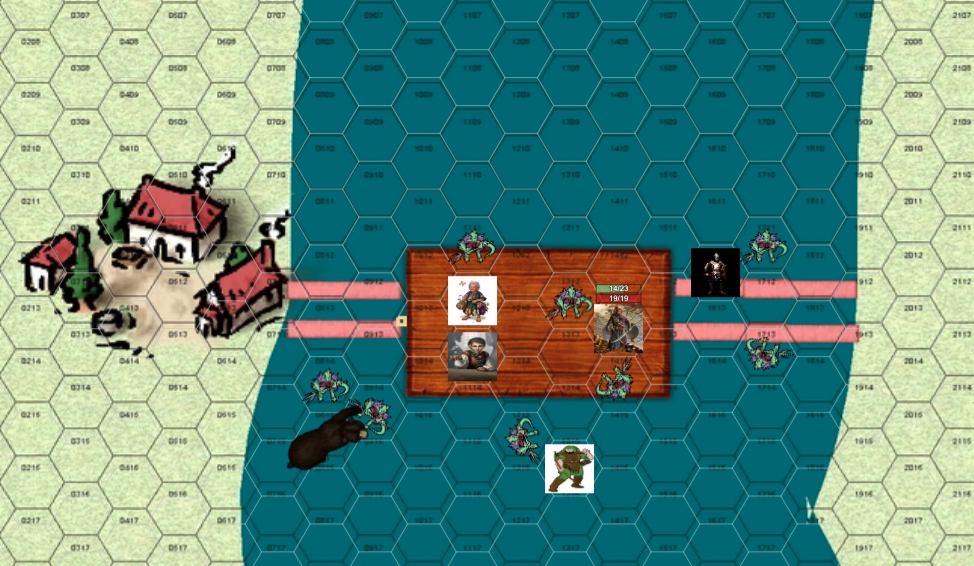
On the ferry, Utana’s problems increased as one of the hawser cutting Keteaorm tried to stab him, but he got on that ferry. Farshad spent much of the fight stunned and disarmed, but got a cut or two in and a good throw of a spare dagger. José’s track record as a wound magnet did not seem under threat, and an exquisite parry from a Keteaorum left him disarmed again. Utana’s parry left him unbalanced and in danger, and Jushuur found his skill not quite able to overmatch his opponents.
It took Phil, playing Utana, far too many times to get back on board, it was kind of both funny and frustrating at the same time. At one point I couldn’t look at the screen , being partially embarrassed, partially paralysed with laughter.
The bear made it onto the ferry, but, once it had safeguarded Salaxwhana it seemed content to stop. Eventually though it went into action again, becoming a menace to Farshad, who needed an expert leap not to end up in the water again, still nervous as his weapons had been under the bear. Another tail whip sent Utana flying back again, the bear’s bulk saving him from plunging back into the water. José was not so lucky, again he hit the drink and his bowstring stretched in the wet.
Alastair, playing Farshad, had an excellent Agility roll to dodge the bear charging through him. He thought about leaping onto the bear. I wish he had, that would have been fun.
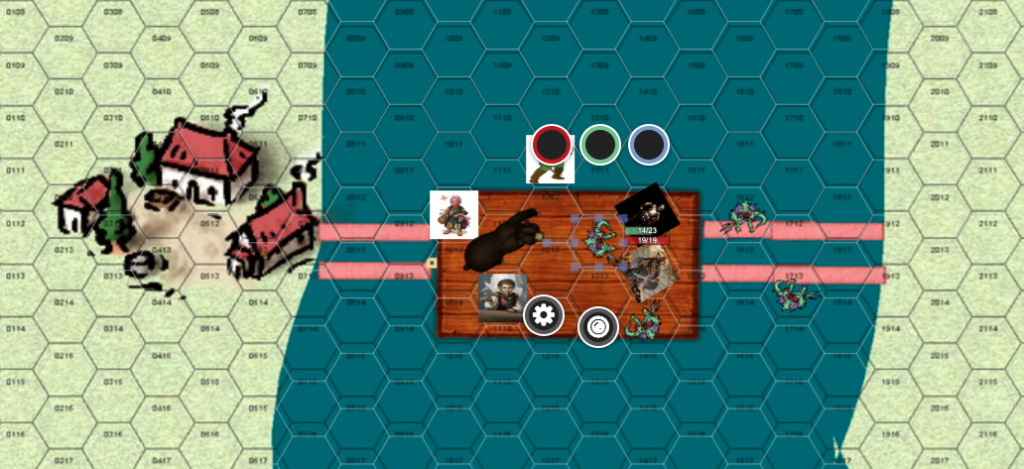
With the only opponents left the Keteaorum desperately trying to cut the hawser, and one injured on left on the raft, an ursine leap into the water to tackle it combined with some skilful archery took care of one, and some hacking from Jushuur made an end of the last of the Keteaorum, though none of the party escaped without bruises and bleeding.
The ferry eventually grounded on the other side. Wounds were treated, the bear having suffered most of all, and the Kotharim with Dhran and Jalabu handled the rest of the transport and replaced the damaged hawsers. They rested for the night, saw Salaxwhana and Dahlvha back on their side of the river, with the best healing José could manage. The caravan headed of, just hearing the call for the gates to shut when almost withing touching point of the city
And there we left it
Some thoughts post this game. I am going to have to check on defences, because unless you take ranks in shield or increase your Agility, your defence does not keep pace with your attack. In fact, success as an adventurer can penalise you, as better armour hurts your Agility. There is Evade but that is sacrificing attack on the hope of a riposte.

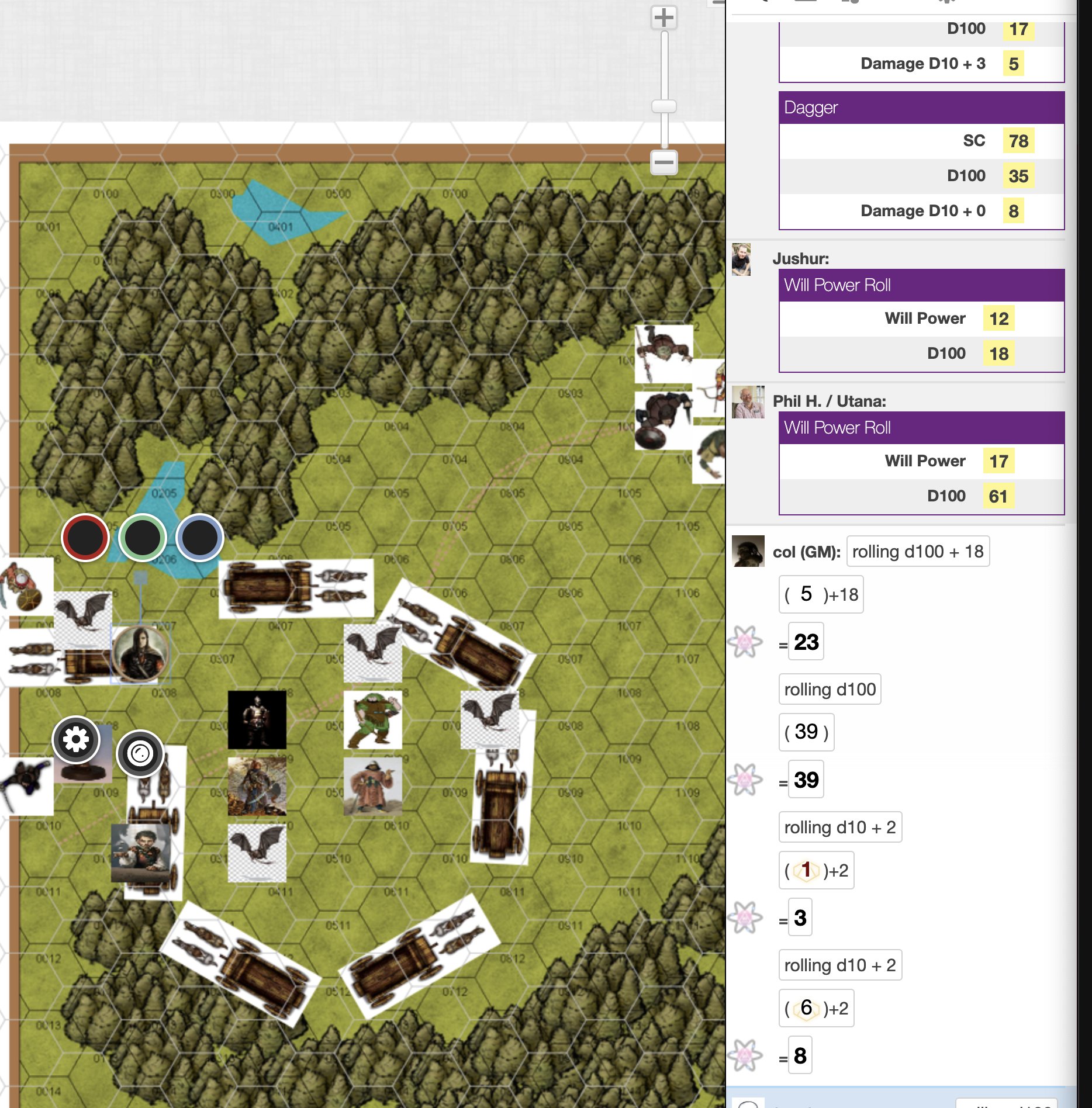
 )
)